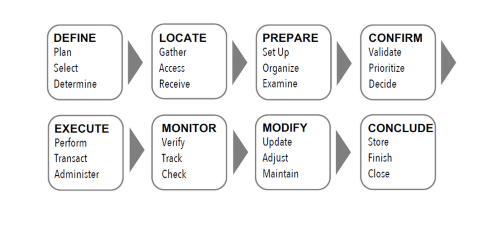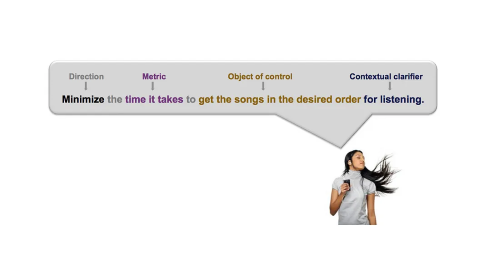A study by Strategyn showed that their clients who used ODI to introduce new products achieved a success rate of 86 percent. Get ready to unlock the secrets to successful innovation!
In this blog, we’re introducing you to Outcome-Driven Innovation (ODI), a revolutionary approach that boosts your innovation success rate by a staggering 5 times the industry average.
Welcome back to the “Customers Needs Decoded” series!
We’ve already explored the foundational understanding of human needs through Maslow’s Hierarchy.
We then delved deeper into Jobs-to-be-Done (JTBD), a powerful framework for uncovering the specific “jobs” your customers are trying to get done with your product or service.
- No more “Trying 50 ideas to find the Best One”
- Understanding the ODI Process.
- How to find opportunities for your product?
- How to implement ODI for product?
- How do you differentiate your product in a crowded market?
- Real-life Examples of Companies Incorporating ODI
No more "Trying 50 ideas to find the Best"
The reality is stark: most innovation efforts fail. Why?
New York consultant, Alan Klement describes “Jobs-to-be-Done” as
The problem with innovation is clear: without knowing precisely the target you are aiming for, your chances of hitting it are slim.
So, what's Outcome Driven Innovation (ODI)?
As people complete these jobs, they have specific measurable outcomes they are trying to achieve. ODI links a company’s value creation activities to customer-defined metrics.
Understanding the ODI Process
Most importantly, the ODI process informs companies how to create products and services that customers will want to buy — and predict which new products will succeed.
1. Define the Market & Create a Job Map
Check out our blog on Job-To-Be-Done to learn about JTBD in detail. Here, you’ll find how to do JTBD interviews to find the real jobs your customers are trying to do!
Defining the Job: Getting it Right
Defining the job accurately is crucial. Here’s how to avoid common pitfalls:
- Don’t just focus on the immediate function of your product. Look at the bigger picture – the ultimate goal the customer is trying to achieve.
- Consider your company’s capabilities. Can you realistically tackle the entire job, or is it best to focus on a specific aspect?
Research shows that all jobs follow eight basic steps: define, locate, prepare, confirm, execute, monitor, modify, and conclude.
This is a visual breakdown of the job into its individual steps, showing exactly what the customer needs to get done. Unlike a customer journey map, which focuses on the customer’s interaction with a product, a job map focuses on the customer’s needs.

2. Finding the Customer Needs and their desired statement
- Core Jobs- What customers are fundamentally trying to achieve.
- Consumption Chain- Smaller steps involved in completing the core job.
- Desired Outcomes- Specific results customers hope to achieve.
- Related Jobs- Tasks that complement or enhance the core job.
- Emotional & Social Needs- Feelings and social experiences desired.
- Financial Considerations- Cost-benefit factors influencing decisions.
The Desired Statement Outcome
ODI defines desired outcomes as customer-defined performance metrics tied to the JTBD. This makes value creation measurable, controllable, and predictable.
A desired outcome statement includes four key elements:
- Direction of improvement: How much better do things need to be? (e.g., Minimize)
- Performance metric: How will you measure success? (e.g., time it takes)
- Object of control: What specific outcome are you targeting? (e.g., get the songs in the desired order)
- Contextual clarifier: In what situation is this outcome desired? (e.g., for listening)
Desired outcome statement =
Direction of improvement + Performance metric + Object of control + Contextual clarifier

3. Measure How Well Each Outcome is served
Unique research methods help achieve the following:
- Identify Improvement Opportunities: Determine which customer needs are important but not well met by current solutions. These are opportunities to enhance offerings.
- Identify Cost-Saving Opportunities: Determine which needs are less important but overly satisfied by current solutions. These are opportunities to reduce costs.
- Prioritize Based on Data: Use data to calculate an opportunity score for each need, showing which ones should be addressed first.
- Assess Competitor Performance: Compare customer satisfaction across different solutions to identify where competitors fall short.
Here are the steps on how to find or prioritize opportunities:
- Create a Survey:
- List all the tasks customers are trying to accomplish (jobs).
- List all the desired outcomes customers want to achieve.
- List any limitations customers face (constraints).
- Find the Right People:
- Survey a representative group of your target audience (180-600 people).
- Rate Importance:
- Ask people to rate how important each job, outcome, and constraint is on a scale of 1-5 (1 = not important, 5 = critically important).
- Rate Satisfaction:
- Ask people to rate how satisfied they are with current solutions for each job, outcome, and constraint (1 = not satisfied, 5 = totally satisfied).
- Analyze the Results:
- Enter the results into an opportunity algorithm to see which jobs, outcomes, and constraints are underserved (need improvement) and overserved (potential cost savings).
Opportunity Algorithm
Importance + Max(Importance – Satisfaction, 0) = Opportunity

The process might seem complex because it uses subjective data (feelings) to find opportunities.
But it’s not like comparing apples to oranges – both importance and satisfaction relate to the same thing we’re evaluating.
We’re not looking for a perfect score, just a general idea of where there’s room for improvement.
4. Discover Hidden Customer Groups with Unmet Needs
Steps to Discover Hidden Segments:
- Discover Key Variables: Use factor analysis on survey data to find which outcomes matter most. This helps identify differences in what customers find important and whether they are satisfied or not.
- Create Clusters (Segments): Use cluster analysis to group customers based on their unique unmet needs. Typically, solutions with 2 to 5 segments are considered. These unmet needs form the basis for creating these groups.
- Profile the Segments: Use profiling questions from the survey to understand why some customers have more difficulties than others. This also helps determine the size of each segment and if customers are willing to pay more for better solutions.
Retain Customers:
- Learn from Loyal Customers: Compare habits of loyal vs. lost customers for insights.
- Support Struggling Customers: Help struggling customers develop skills to benefit from your product.
5. Boost Sales with What You Already Have.
- Find the Perfect Fit: Use customer research to identify groups (segments) with specific needs. Match your existing products to the segments they can best serve.
For example, a pump company that unknowingly had a product ideal for a niche customer facing unique challenges. By aligning the product with this segment, they could target their messaging more effectively. - Highlight Hidden Strengths: Customer research can reveal features of your products that address unmet customer needs, even if you haven’t emphasized them before.
For example, Cordis discovered their product addressed concerns other solutions didn’t. By promoting these “un-messaged strengths,” they significantly increased market share. - Speak the Customer’s Language: Focus on the outcomes customers care about, not just product features. In the wound care market, Coloplast learned nurses prioritized preventing complications. By crafting a message around this outcome (“prevent complications”), they achieved double-digit growth.
- Get Found by Eager Buyers: People often search online for solutions to their problems, not specific products. Use customer research to identify keywords related to unmet needs. Build targeted ads around these keywords so potential customers can easily discover your perfect-fit products.
- Identify Needs Early: Use short surveys, 5-10 questions, to understand which customer segment a lead falls into. This helps you connect them with the solution that best addresses their specific needs.
6. Unveiling New Products To Address Undeserved Outcomes.
Customer insights are the key to creating products that people truly need.
Here’s how to use them to develop a winning product portfolio:
- Improve Existing Products:
- Identify unmet needs through customer research.
- Enhance existing features to meet these needs, saving time and resources.
- Example: Microsoft repackaged internal tools to meet customer needs, generating significant revenue.
- Prioritize R&D Efforts:
- Focus on developing solutions for the most critical unmet needs.
- Example: Cordis prioritized a product to prevent artery blockage, resulting in a billion-dollar stent.
- Partner or License Expertise:
- Partner with companies that have the expertise you need.
- Example: An auto manufacturer partnered with a software company to meet customer needs.
- Acquisitions for Growth:
- Acquire companies that fill gaps in your offerings and address unmet needs.
- Example: Arm & Hammer acquired a company to boost their dairy business.
- Focus on Important Features:
- Use customer insights to identify and develop the most important features.
- Example: Focus on pressing customer needs to drive effective product innovation.
- Expand with Services:
- Add service components to fully meet customer needs.
- Example: Advanced Medical Optics added services to their medical devices, improving satisfaction and loyalty.
- Envision the Ultimate Solution:
- Define the ideal product that addresses all customer needs.
- Example: An agricultural company used insights to shape their product vision and made strategic acquisitions.
Remember: Successful product development starts with understanding customer needs. Use customer insights to guide your innovation and create products that win in the market.
How to implement ODI for product?
- Practice Makes Perfect:
Imagine you’re getting data from surveys. Create sample data like what you expect from real users.
Set up a system to handle this data (like a program or spreadsheet) and make sure it gives you the results you want (charts, tables, etc.). - Identify the Job-to-be-Done:
Identify the JTBD of your customers. - Craft Interview Templates:
Design a format for your user interviews to efficiently gather information. Think of guiding questions to uncover different desired outcomes.
Practice interviewing yourself or colleagues to see how many outcomes you discover (aim for 20-40 per interview). Refine your questions and interview skills based on these practice sessions. - Find Your Interviewees:
Think of people who might use your product.
Reach out to your network, colleagues, or even ask for favors to get a few initial interviews. - Conduct User Interviews:
Ideally, interview users in person. But online tools like video calls or phone calls work too. Remember to get permission to record the interview.
Use your templates to capture the desired outcome statements and important comments during the interview. Consider transcribing the recording later for a more detailed record. - Enough is Enough!
Once you stop hearing many new outcomes in your interviews, that’s a good stopping point.
Gather all the collected outcomes into a single list and remove any duplicates with slightly different wording.
Get to a single list of around 100 customer outcomes for the chosen job-to-be-done. - Summarize & Prepare:
Create a summary of the key insights gathered from the interviews.
Put your list of outcomes in a user-friendly format.
Develop a presentation with a few slides explaining the process.
Start designing your survey using an online survey tool (like SurveyMonkey). Decide on any incentives you might offer users for completing the survey and how you’ll promote it. - Get Approval & Refine Survey:
Brief your team on ODI and highlight some interesting insights you’ve already uncovered. Emphasize that the analysis is ready but needs survey data and some budget for incentives (if any).
Work together to streamline the survey for user-friendliness while staying true to ODI principles. - Launch the Survey!
Publish your survey online and send it out to your email list or target audience.
If you’re offering incentives, remember to track the number of responses and close the survey once you reach your target to avoid exceeding your budget. - Analyze & Present:
Download the data from your survey tool and use it to update your initial analysis.
Review the results and summarize them in both written and visual formats (charts, graphs).
Present your findings to your team and stakeholders.
Hold a workshop to discuss opportunities based on the findings and decide on the next steps. - Keep it Visible:
Continuously refer back to your research throughout the product development process to ensure you’re on the right track.
In short,
- Find your JTBD (Jobs-to-be-Done).
- Conduct interviews to discover the desired outcome statement.
- Run a survey, collect data, and analyze.
- Decide on the innovation for your product based on the collected insights.
Explore the broader landscape of alternatives your customer considered before choosing you:
- The Search: How did you look for a solution? What options did you consider?
- Why? Understand their decision-making process.
How do you differentiate your product in a crowded market using customer insights?
- Understand Your Customers:
- We’ve learned how to understand our customers via JTBD and ODI.
- Define Your Value Proposition:
- Remember the desired outcome statement we learnt before.
- Choose Your Positioning Strategy:
- Reflect your value proposition and competitive advantage in your positioning strategy.
- Remember Maslow’s Hierarchy of Needs?Amul Milk and Dairy Milk, although they have milk in their names, have positioned themselves differently in the market.
- Communicate Your Differentiation Loud and Clear:
- Craft a clear and consistent message that conveys your value proposition and positioning strategy.
- Utilize various channels and tactics, such as distinctive brand identity, different marketing strategies, and unique pricing strategies, to communicate your differentiation and benefits effectively.
- Never Stop Innovating:
- Monitor and measure your product performance, customer feedback, and market trends to continuously improve and update your product.
- Constantly adapt and evolve to stay ahead of trends and consistently deliver superior quality to maintain and enhance your differentiation.
Real-life Examples of ODI
Philips Healthcare
- Problem: Managing chronic health conditions at home can be challenging for patients.
- Desired Outcome: Patients want timely and accurate monitoring of vital signs to proactively manage their health.
- Innovation Outcome: Wearable devices and mobile apps allow patients to track their health data in real-time. This empowers them to take a more active role in their healthcare journey and enables early intervention when needed.
- Real-Life Example: Philips Healthcare leverages ODI by offering remote patient monitoring solutions.
- Their wearable devices and connected health platforms allow healthcare providers to monitor patients’ vital signs remotely, promoting proactive care and early intervention.
- This aligns perfectly with the desired outcome identified through ODI – empowering patients to manage their health effectively.
- Problem: People often find online shopping cumbersome and time-consuming.
- Desired Outcome: Customers crave a quick and hassle-free shopping experience.
- Innovation Outcome: E-commerce platforms implement features like one-click checkout, personalized recommendations, and intuitive user interfaces. These innovations streamline the online shopping journey, saving time and reducing frustration.
- Real-Life Example: Amazon is a champion of ODI in e-commerce. Their one-click ordering and personalized recommendation system directly address the desired outcome of convenience.
- Imagine finding the perfect product in seconds, thanks to personalized suggestions, and then checking out with just a single click!
- This is the power of ODI in action, making online shopping a breeze.
Related Post
Become a Customer-Centric Innovator
ODI isn’t a one-time fix, but a springboard for continuous customer-centric innovation.
Through consistent analysis of customer insights, you can ensure your products stay relevant and continually evolve alongside your customers’ needs.
Now, empowered with ODI, you can confidently innovate with a focus on the jobs that truly matter, driving both customer satisfaction and business success.
Article Contribution by – Devika Kovachi & Sapna Garg











